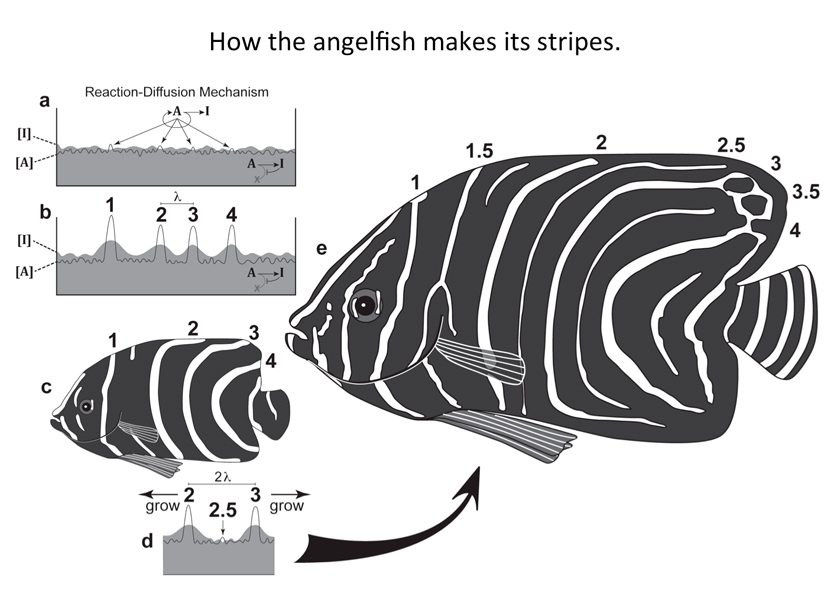
| Angelfish have stripes that develop in accordance with the Gierer-Meinhardt Model: a slow-diffusing molecule (activator A) catalyzes its own production via a feedback loop (curved arrow), while a fast-diffusing molecule (inhibitor I) blocks this loop (T-bar at point X). Initially (a) A and I have uniform levels (concentrations on y axis) along the fish body (x axis). As long as A stays below the 'sea level' of I (gray fill), it will be inhibited and will not 'catch fire' since its autocatalytic loop is broken (submerged circuit). However, Brownian motion inevitably causes fluctuations (wavy lines) that force A to locally exceed I, whereupon a peak of A emerges because the I made by A (horizontal arrow in a) diffuses away so quickly that it cannot extinguish the 'fire.' As the first peak of A rises at a random site, the mound of I around it also rises, thus stifling any other incipient peaks within a certain range (minimum wavelength λ). The result (b) is an array of peaks (1, 2, 3, 4) at roughly uniform intervals but at unpredictable locations. The angelfish obeys this logic, because it acquires stripes as it grows. A single individual is depicted at ~6 (c) and ~12months (e) of age (body lengths are ~4and ~8cm, respectively). Major stripes are marked 1-4at the early stage, with later stripes numbered accordingly. As old stripes grow apart (d), thin new ones intercalate (1.5, 2.5, 3.5). |
|
leopard | cheetah compared with butterfly | anglefish | zebra | mouse cloud leopard | giraffe | ant | beetle | treehopper stalk-eyed fly | ladybird | snake | The Interactive Fly resides on the web server of the Society for Developmental Biology. |

